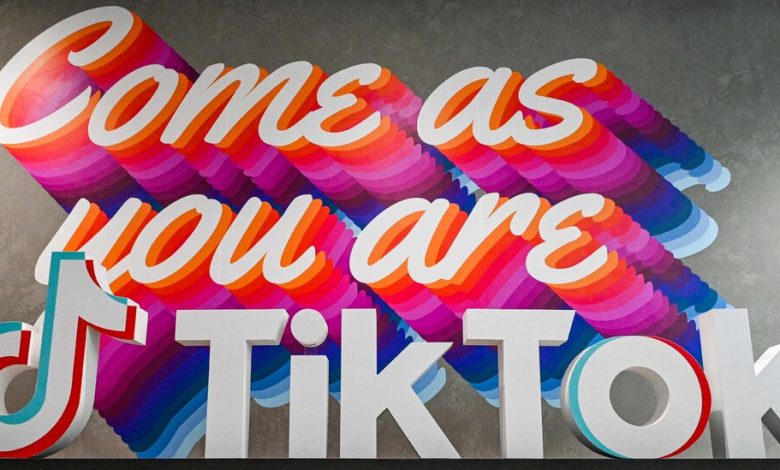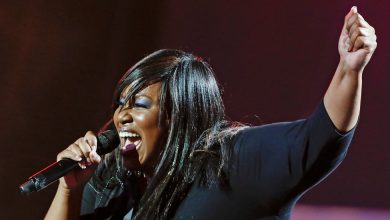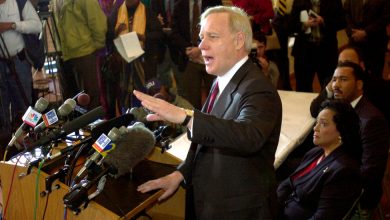If Every Brand Is Funny Online, Is Anything Funny?

In the comments on a recent TikTok post by RyanAir, an exuberant traveler posted about flying the airline for the first time. In the past, the typical corporate response to this might have been something like, “We’re glad to have you!” or “Thanks for joining us!”
Ryan Air went with: “Do you want a medal?”
It was quirky, except not. Being weird on social media has become standard practice for corporate brands.
This has long caused some older people to recoil. And there are signs it is no longer working with millennials or Gen Z customers — people like Priya Saxena, 25, who works in digital marketing in Atlanta.
“I roll my eyes,” Ms. Saxena said. “A lot of them are trying too hard. I think sometimes they’re trying to fit in and reach out to my generation. So it’s not very natural.”
Ron Cacace, a 33-year-old former social media manager for Archie Comics, said the brands are now in a “race to the bottom.”
“When you see that everyone is kind of doing this lowercase funny, sarcastic posting or outlandish slang-based advertisements, what happens is you have to continue to one-up it,” Mr. Cacace said. “The quality is kind of dropping across the board.”
That’s especially true on the former Twitter, now known simply as X in its own effort at rebranding.
Here’s Dominos, the pizza chain, posting on X last month: “red flag: not dipping ur slice in ranch.” And here’s Applebees: “‘Don’t eat after 8pm’ ok then tell me why apps are half off after 9pm????’”
Over on TikTok, the sponge company Scrub Daddy recently posted a short video featuring a sponge and some butter.
The caption “Butter Daddy. Daddy wit da butter.”
You’re not alone if you are annoyed by the memes, slang, misspelled words and abbreviations now regularly put into the world by once buttoned-up corporate behemoths.
And it’s not just corporations: It was not unusual, for example, when New Jersey’s official state social media, told one user “stop gaslighting us, Nancy.” Nancy had disputed the existence of Central Jersey.
“They’re trying to blend in,” Jennifer Grygiel, an associate professor of communications at Syracuse University, said. “They have clocked their audience as being younger.”
It wasn’t long ago that brands were simpler online: Sale here, happy holiday wishes there.
But the reach of influencers on social media and the increasing purchasing power of people in their 20s has pushed companies to change their voice. Online influencers on TikTok have more sway over Gen Z than traditional advertising, said Donna Hoffman, a marketing professor at George Washington University.
To reach this group, Ms. Hoffman said companies are copying the influencers and their pithy posts. But they sometimes come off as try-hard, or fake.
Those who work in the field say the shift on social media began in the mid-2010s, or thereabouts, particularly with fast food brands. The original goal was to target millennials who were frequent users of Twitter, but has since shifted.
Wendy’s was one of the earliest and most prolific adopters of Weird Brand Posting. The restaurant chain began to routinely mock competitors and use a sardonic voice to make fun of users who interacted with its account.
Amy Brown, who was the social media manager for Wendys from 2012 to 2017, said she began to shift Wendy’s approach under the radar.
“It’s not like our chief marketing officer was looking at our Twitter account, right?” Ms. Brown, 34, said. “So a lot of it was taking calculated risks and really experimenting on a channel that high-profile decision makers weren’t really paying attention to yet.”
Wendy’s declined to mock us for this story.
Almost overnight, brands realized the power of shock, said Mr. Cacace, who took over the Archie Comics account in 2014. “That’s what a lot of these crazy, unconventional tactics start to look like: ‘Did they mean to post this? Somebody has done something wrong!’”
A high-profile example came in 2017, when Hostess declared itself to be the official snack of the total eclipse, a phenomenon that hadn’t been visible in the United States since 1979.
MoonPie, a competitor, quote-tweeted the original post and said “lol ok,” drawing tens of thousands of likes, shares and replies.
MoonPie had already established itself as having an amusing digital voice, but this amplified that: A company executive told FastCompany months later that MoonPie sales had skyrocketed.
Since then, brand weirdness has become more uniform.
In 2021, the restaurant chain Wingstop got into a flirtatious exchange with a user, which included lines from the account like “all you have to do is open your mouth.” The thread blew up.
Sometimes brands stumble into these moments. This summer, McDonalds began selling a milkshake inspired by Grimace, its purple blob-like mascot. This spurred a trend on TikTok in which young people filmed themselves pretending to die from drinking the shake.
McDonald’s acknowledged what was happening with a post from Grimace (“meee pretending i don’t see the grimace shake trendd”). And, in a sign that quirky still sometimes works, sales of the limited edition shake surged.
“When a brand can allow you, the audience, to play it, make it your own, that’s when you see things really transcend,” said Ariel Rubin, a 38-year-old former communications director for the Iowa-based Kum & Go, a convenience store known for cheeky social media posts.
Trying too hard to be cute can backfire. In 2021, Burger King in Britain posted on Twitter, “Women belong in the kitchen.” The negative reaction was loud and swift, despite efforts at damage control in the follow-up tweets: “If they want to, of course. Yet only 20% of chefs are women.”
Quirky posting is not enough: the Gen Z audience is more likely to consider corporate ethics and morals than previous generations, according to market research.
“I don’t want to be sponsoring a brand that doesn’t sponsor the values that I also have,” said Eva Hallman, a 19-year-old journalism student at Butler University.
Wendy’s, for example, has been the subject of boycotts and protests for declining to join the Fair Food Program, an initiative that has pushed fast-food chains to buy materials from growers with high standards. Separately, after 17 Wendy’s workers announced on TikTok in 2021 that they were quitting their jobs because of low pay, the company was hammered by tweets exhorting it to pay workers better.
“A meme can create a strong online persona,” Ms. Hoffman said. “But if a company is behaving cynically and using that fun to divert attention from their bad behavior, that’s a risk.”
The changes at the former Twitter are the latest wrinkle, after Elon Musk took the platform over and changed many of its features and moderation policies. Some corporations have withdrawn entirely from interacting on X, including Best Buy and Target.
More brands are turning to TikTok. And it remains to be seen how they will adapt to the Twitter alternatives on the rise, like Threads from Instagram and Bluesky Social, or the openly anti-commercial Mastodon.
“There are authentic ways to still be weird on the internet,” Ms. Brown said of brands’ efforts to be quirky as these platforms continue to change.
As for the strategy she pioneered, she said: “It is time to put the Wendy’s thing to bed.”



